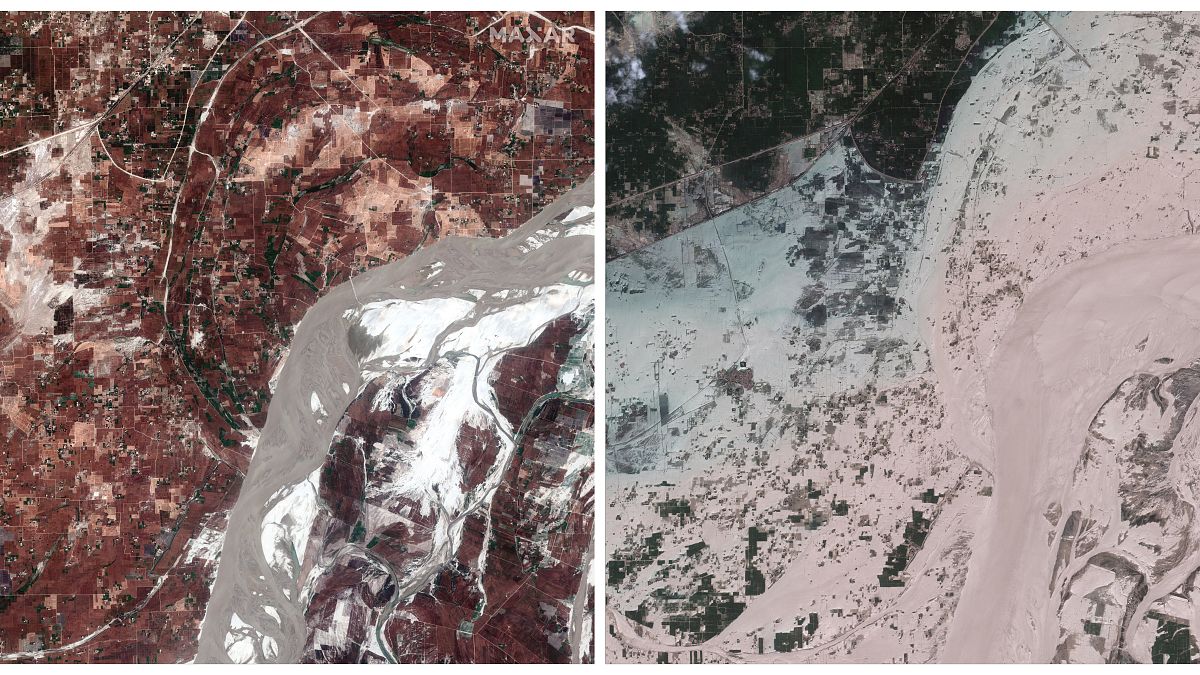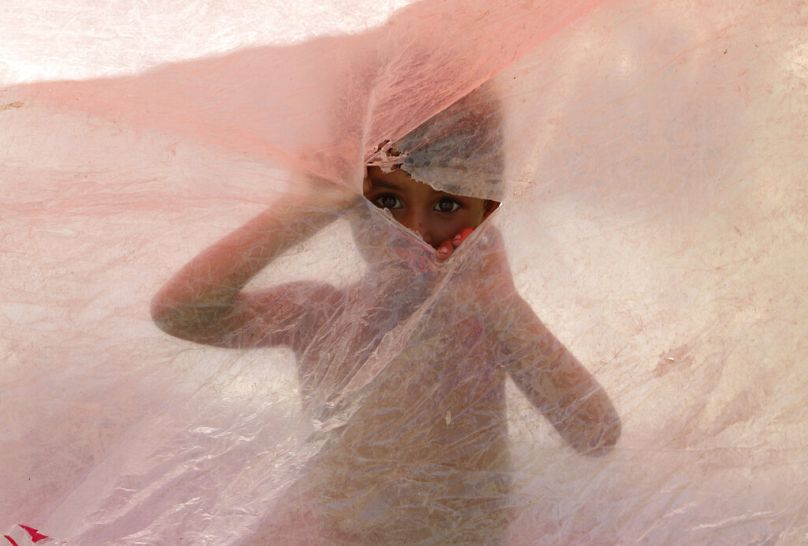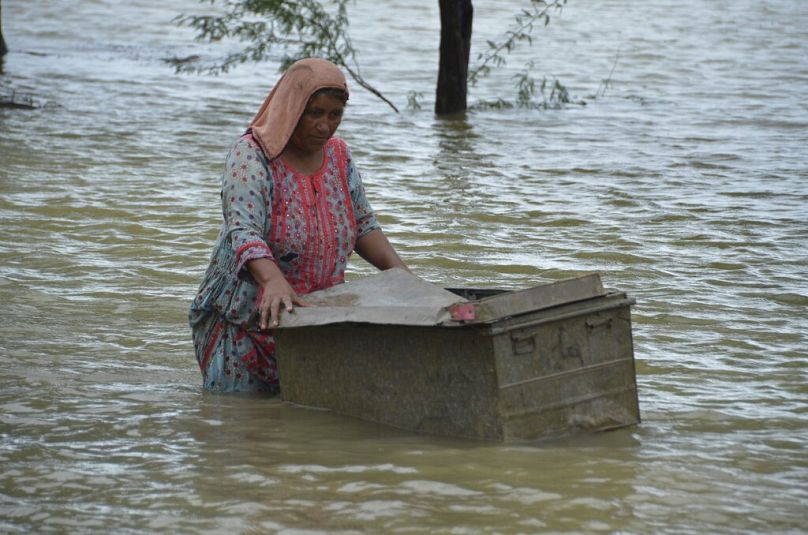Prime Minister Shehbaz Sharif has called for international aid as the country struggles to cope.
•
Nearly 500,000 people have been left homeless after unprecedented monsoon rains in Pakistan. Officialls added that more than 1,130 people have been killed since June, in what the climate minister called “a serious climate catastrophe”
Flash flooding from the heavy rains has washed away villages and crops as soldiers and rescue workers evacuated stranded residents to the safety of relief camps and provided food to thousands of displaced Pakistanis.
Pakistan's National Disaster Management Authority reported the death toll since the monsoon season began earlier than normal this year - in mid-June - reached 1,061 people after new fatalities were reported across different provinces.
Sherry Rehman, a Pakistani senator and the country's top climate official, said in a video posted on Twitter that Pakistan is experiencing a “serious climate catastrophe, one of the hardest in the decade.”
“We are at the moment at the ground zero of the front line of extreme weather events, in an unrelenting cascade of heatwaves, forest fires, flash floods, multiple glacial lake outbursts, flood events and now the monster monsoon of the decade is wreaking non-stop havoc throughout the country," she said.
Appeal for international aid
Pakistan's Prime Minister Shahbaz Sharif has appealed for international help in battling deadly flood damage in the impoverished Islamic nation.
Sharif said that 33 million people had been impacted by the floods - about 15% of Pakistan's whole population - and blamed "the horrors of climate change" for the natural disaster.
However that is only part of the picture. Construction in flood-prone areas, endemic corruption, lack of investment in vital infrastructure, scant regard for the environment and poor preparedness for natural disasters also exacerbate the problems in Pakistan when flooding happens.
The monsoon season, which began earlier than normal this year, has lashed Pakistan with particularly heavy rains and rescuers have struggled to evacuate thousands of marooned people from flood-hit areas. The crisis forced the government to declare a state of emergency.
In response to Sharif's appeal for international aid, the United Nations planned a $160 million flash appeal for donations which will be launched on 30 August.
Flooding could affect a third of the country, say ministers
The picturesque Kalam Valley in Khyber Pakhtunkhwa province is one of the areas most affected by the rains and flooding. Waters from overflowing rivers swept away entire buildings, including an iconic hotel.
“The situation is pretty serious as we don't have any road link left with the rest of the province, we don't have electricity, gas and communications network and no relief is reaching here,” said Muzaffar Khan, whose grocery store was swept away along with many other shops.
Pakistan's Information Minister Maryam Aurangzeb said soldiers and rescue organizations were helping people to reach safety in many districts of southern Sindh, northwestern Khyber Pakhtunkhwa, eastern Punjab and southwestern Baluchistan provinces.
“Government has sanctioned sufficient funds to financially compensate the affected people and we will not leave our people alone in this tough time,” she said.
Aurangzeb asked wealthy Pakistanis and relief organizations to come forward with aid to help people affected by the flooding.
In northwestern Khyber Pakhtunkhwa province, flooding destroyed the gates of a major water control system at the Swat River, leading to flooding in the districts of Charsadda and Nowshera, said Sania Safi, a top administrator in Charsadda.
“We preempted the situation and warned and forced hesitating residents to leave their homes for safety and move to relief camps established at government buildings in safe places,” she said.
Safi said there was concern of further rising of the Swat and Kabul rivers, adding to the misery of residents who have already suffered the loss of lives and property.
In Nowshera district, local administrator Quratul Ain Wazir said flood waters submerged streets before the gushing waters headed toward low-lying areas.
“Our administration has evacuated many people and taken others to relief camps where the government provided beds and food in safe buildings," she said. ... "We will use police to force those hesitant to leave their homes.”
Khushal Wahab, who lives in a neighbourhood in Nowshera submerged in water, said residents recalled catastrophic flooding that took place 2010 and many evacuated fearing similar danger. “People are scared," he said.
Thousands whose homes were swept away now live in tents, miles away from their inundated villages and towns, after being rescued by soldiers, local disaster workers and volunteers, authorities said.
In Baluchistan, Asadullah Nasir, a spokesperson at the provincial disaster management authority, said all 34 districts of the impoverished province were badly affected by heavy rain and flooding. He said road networks were destroyed and bridges washed away and relief was only possible by deploying helicopters, which are not often able to operate because of bad weather. He said provincial officials have confirmed 235 deaths but the number was expected to increase significantly after communications are restored.
In eastern Punjab province, the Rajan Pur district appeared to be the hardest hit along with the district of Dera Ghazi Khan. Thousands of mud and brick houses were inundated by water, most of them completely demolished or at least partly destroyed.
Residents made homeless by the flood took shelter on higher ground, where they waited for relief goods and other help.


